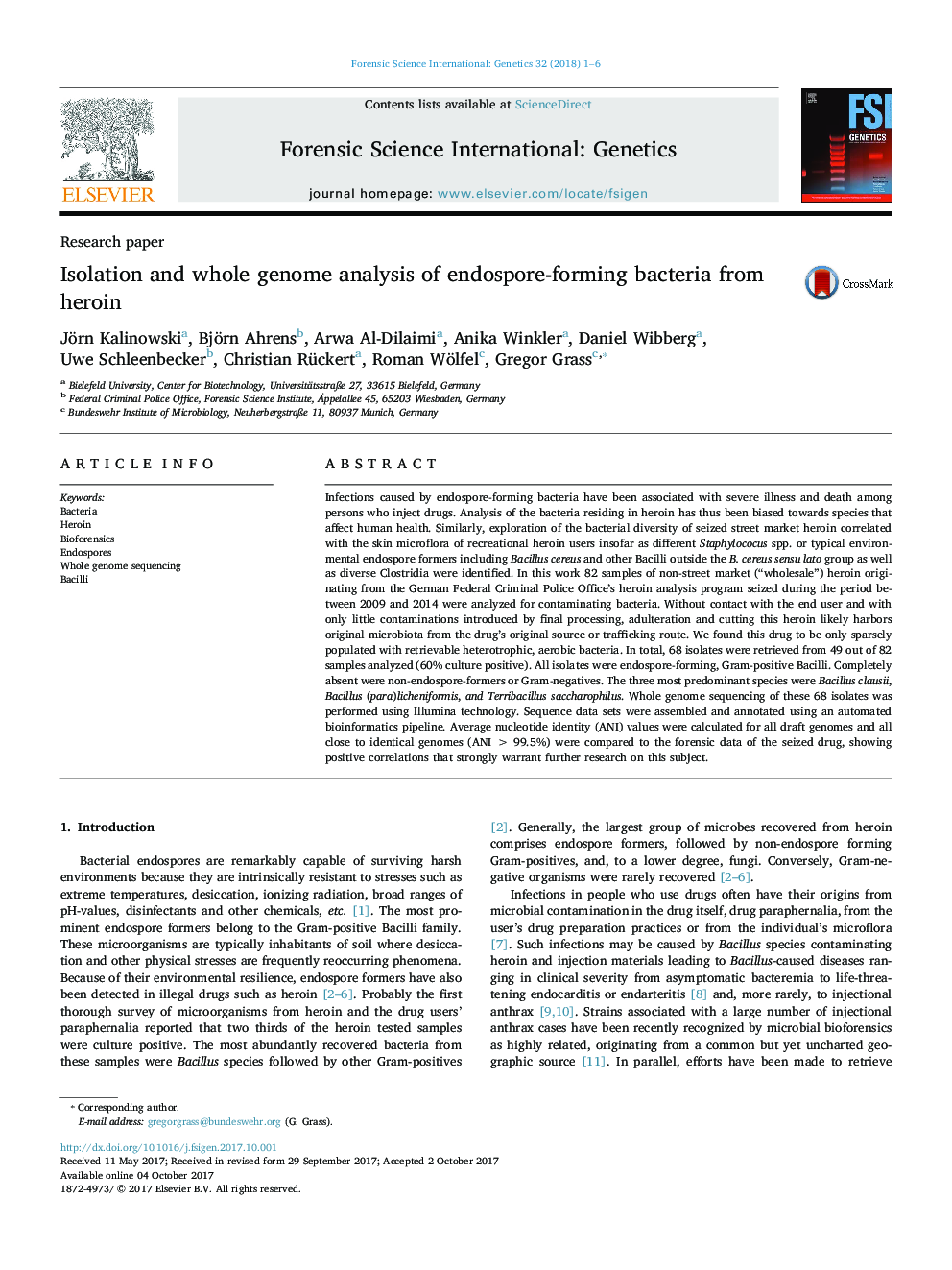| Article ID | Journal | Published Year | Pages | File Type |
|---|---|---|---|---|
| 6462664 | Forensic Science International: Genetics | 2018 | 6 Pages |
â¢Contaminating bacteria of wholesale heroin solely comprised endospore formers.â¢Genome sequence analysis revealed that all isolates belong to the Bacillales order.â¢Indicator species were found in samples from different cities.â¢Shared indicator species from different cities showed very high genome similarity.â¢Shared indicator species in diverse heroin seizures correlated with chemical profiling.
Infections caused by endospore-forming bacteria have been associated with severe illness and death among persons who inject drugs. Analysis of the bacteria residing in heroin has thus been biased towards species that affect human health. Similarly, exploration of the bacterial diversity of seized street market heroin correlated with the skin microflora of recreational heroin users insofar as different Staphylococus spp. or typical environmental endospore formers including Bacillus cereus and other Bacilli outside the B. cereus sensu lato group as well as diverse Clostridia were identified. In this work 82 samples of non-street market (“wholesale”) heroin originating from the German Federal Criminal Police Office's heroin analysis program seized during the period between 2009 and 2014 were analyzed for contaminating bacteria. Without contact with the end user and with only little contaminations introduced by final processing, adulteration and cutting this heroin likely harbors original microbiota from the drug's original source or trafficking route. We found this drug to be only sparsely populated with retrievable heterotrophic, aerobic bacteria. In total, 68 isolates were retrieved from 49 out of 82 samples analyzed (60% culture positive). All isolates were endospore-forming, Gram-positive Bacilli. Completely absent were non-endospore-formers or Gram-negatives. The three most predominant species were Bacillus clausii, Bacillus (para)licheniformis, and Terribacillus saccharophilus. Whole genome sequencing of these 68 isolates was performed using Illumina technology. Sequence data sets were assembled and annotated using an automated bioinformatics pipeline. Average nucleotide identity (ANI) values were calculated for all draft genomes and all close to identical genomes (ANIÂ >Â 99.5%) were compared to the forensic data of the seized drug, showing positive correlations that strongly warrant further research on this subject.
